- Increase E-commerce Conversions
- What Exactly Is E-commerce Conversion Rate?
- What Affects Ecommerce Conversion Rate?
- What Is a Good Ecommerce Conversion Rate?
- How to Increase Your Ecommerce Conversion Rate
- 20 Tips and Tricks to Increase Your Ecommerce Conversion Rate
- How to Optimize Your Ecommerce Conversion Rate by Traffic Source
- Wrapping Up
Increase E-commerce Conversions
Ecommerce marketers and business owners develop and launch complex, multi-pronged marketing strategies just to bring potential customers to their websites. Unfortunately, the work doesn’t end there. It takes even more effort to turn website visitors into paying customers.
Online window shopping is a fun pastime for consumers, but it very rarely leads to sales. This is why optimizing your website for sales is an integral part of the digital marketing process. It will encourage consumers to take a favorable action—buying a product, signing up for a service, or signing up for a newsletter.
If you’re wondering how to increase ecommerce conversions quickly, we have concrete and specific steps that are sure to help.
This comprehensive guide breaks down the best methods to do so and how they work.
What Exactly Is E-commerce Conversion Rate?
Ecommerce conversion rate is the number of consumers that convert after they visit a brand’s website or landing page. This often refers to a sales conversion, but the audience action can differ based on the industry and purpose of visiting the website.
Conversions can mean:
- Purchasing a product or service
- Subscribing to a product or service
- Completing and submitting a form
- Contacting the business via phone, chat, or email
- Creating an account
- Downloading a resource
- Making an upgrade
- Or any other type of engagement.
Importance of Conversion Rate
Unlike most performance indicators that only provide data about one or two elements of the business, the conversion rate is different. It is a complex metric that shows the number of visitors to a site and how many of them are completing the purpose of the visit.
It shows businesses how well their efforts and strategies toward ecommerce conversion rate optimization are working. It is a strong indication of areas they need to improve and optimize.
Conversion rates can also help businesses understand if organic site traffic needs to be worked on. This can be a significant difference-maker, considering the additional cost associated with increasing traffic.
But why should businesses aim for a high conversion rate?
No matter what industry you’re in, ecommerce conversions tell you how much return on investment (ROI) you’re getting for your marketing initiatives. This all-important metric will help you recalibrate and optimize your advertising strategies to generate more revenue for long-term success.
What Affects Ecommerce Conversion Rate?
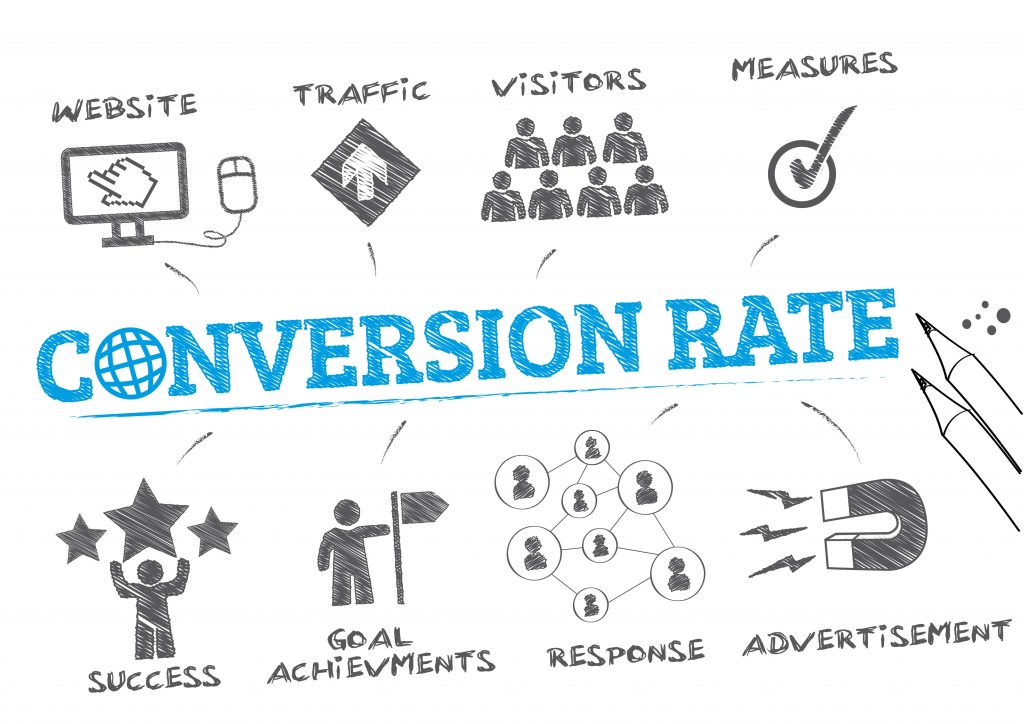
Many factors can affect your conversion rate. We’ve classified them into three categories:
Interest
Ecommerce interest works in two directions: existing interest in your brand and interest generated by a specific product. Your first strategy is to understand your target audience’s interests, and the second is to make sure your products cater to customer needs and wants.
Check out this guide to learn how to build highly targeted audiences using your ecommerce store data.
Interest is higher when users access the website from certain traffic sources, countries, or in certain industries. For example, email and referrals generate higher ecommerce conversions than paid ads or social media. Buyers visiting your store from a particular country (such as the U.S. and Germany) are more likely to purchase than others.
Generating interest is all about understanding customer needs and offering them valuable solutions. It is a crucial element of digital marketing, one we will continue to discuss in the tips down below.
Product
Products affect your ecommerce conversions, too. From the quality of the products to how they are displayed and promoted, many different elements influence consumers’ purchase decisions.
As a marketer and business owner, you must focus on increasing the attractiveness of your products. This can be done in the development stage—by taking into account your customers’ feedback and pain points, you can make your product the best option in your niche.
Now, we understand that not all ecommerce businesses manufacture their own products. When you source your products, carefully pick inventory to match industry demands.
You can also elevate your product in the marketing stage. Strategic photography and well-written advertising copy (blog posts, product descriptions, even social media posts) position your product as the very best choice available.
Process
The online shopping process is another critical element of the overall ecommerce experience. Instead of buffing up and decorating your brick-and-mortar store, you must make your website accessible, easy to use, and a breeze to navigate.
Here are some website elements you must optimize:
- Making the page load faster
- Reducing the steps involved in each purchase
- Giving customers what they want immediately
- Using intuitive navigation to facilitate each visitors’ journey
- Making the website accessible on any device
If you look at the list of tips below, you will notice that most of the reasons for customers not making a purchase are process-related. This is because the step-by-step ecommerce process differentiates your company from the competition.
These points of interaction involve many variables, all of which must be streamlined and optimized to truly encourage visitors to purchase and support your brand.
Reasons Why Visitors Do Not Convert
While not all problems that lead to abandoned carts and zero purchases can be resolved easily, determining the reason is the first step to eradicating the problem.
Here are some reasons that can help you narrow down why your visitors are leaving your site without making a purchase:
- Poor website design
- Low-quality images
- Unappealing products
- Uninspiring product descriptions
- Slow-loading webpages
- Unresponsive buttons
- Lack of mobile optimization
- Complicated and unintuitive website navigation
- Limited payment options
- Lack of security
- Complicated checkout process
- No retargeting or remarketing strategy
- Untrustworthy brand
- High shipping fees
- Mundane website copy or call-to-action
- Unclear whom the brand is selling or talking to
What Is a Good Ecommerce Conversion Rate?
Average ecommerce conversion rates fall between 2% and 5%, depending on your industry and country of operations. If your current conversions are dipping below 1%, these are good benchmarks to aim for as you begin to optimize your website.
However, these averages should not be your final goal.
Leading brands enjoy higher conversion rates above 5%. Some even have landing pages with conversion rates of 11% and higher.
Imagine optimizing your website so that more than one in every ten website visitors will purchase from you. Your revenue will soar, and your business can continue growing for years to come.
Calculate the Conversion Rate for Your Website or App
The conversion rate percentage is calculated by dividing the total number of conversions by the total number of visitors multiplied by 100.
Total number of conversions / total number of visitors ✕ 100 = conversion rate
Let’s look at how you can achieve your best sales record so far through ecommerce conversion rate optimization.
How to Increase Your Ecommerce Conversion Rate
Increasing your conversion rate involves identifying conversion goals, calculating the conversion rates for these goals, and optimizing your site or app. This process is collectively known as ecommerce conversion rate optimization (CRO).
How do you measure an increase in conversion rate?
An increase of even 1% in ecommerce conversions means a massive increase in overall sales—a great sign of progress. For average mid-level businesses, this percentage increase means double the sales or even higher.
20 Tips and Tricks to Increase Your Ecommerce Conversion Rate
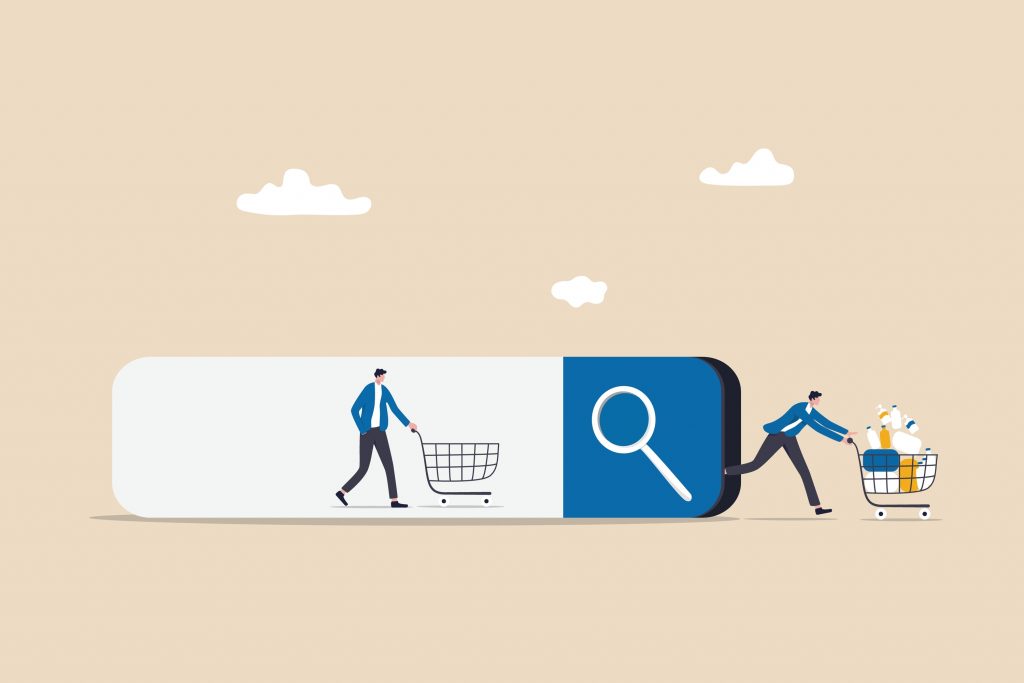
1. Use High-Quality Product Images and Videos
No matter what you’re selling on your ecommerce website, you must post relevant, high-quality images of what you offer. A picture is worth a thousand words, and the most effective way to show off the many benefits of your product is through images.
The quality of your product images is crucial to your sales conversions. After all, it is the only chance customers have to really “look” at what they will be purchasing. Ecommerce stores cannot provide the complete sensory experience that a physical shop can, so you must make up the difference by providing the very best two-dimensional visuals in the form of images and even demo videos.
You can do many things with static images. You can provide options to zoom into the most minute details, rotate the perspective 360 degrees, and even render mockups of various color and design options in one product. Dynamic product images can go a long way in convincing website visitors to click purchase.
Quality visuals must be your priority across all platforms, including social media, live video, and streaming. Use high-resolution content to show that your brand prioritizes quality and that customers will not be disappointed with what they get.
2. Write Quality Content That Converts
While not all content on your website is explicitly made for conversion, it should facilitate the sales process.
Website text should take up less space than visuals on any ecommerce website. What little text you do end up using must be straightforward and appealing.
Following the Law of Prägnanz or Pithiness, the human eye seeks simplicity even in complex shapes. The easier it is to comprehend the information, the more appealing it will be to consumers.
Create content that is:
- Easy to understand
- Honest and unbiased
- Clutter and distraction-free
- SEO-friendly
The best way to nail content for your website is to ensure it shows empathy towards consumers. Word choice, tone, sentence length, and structure must address your potential customer at all times and show them how they will benefit from supporting your brand.
Put thought into your copy, and remember that less is always more!
3. Integrate Live Chat Support
Modern consumers prefer instant gratification at all times. One way to leverage this is to provide immediate responses when they reach out. Live chats will help you deliver support instantly and keep your customers engaged and happy.
Of course, simply integrating a basic live chat code is not the best way to increase ecommerce conversions. It is also about how you implement, personalize, and maintain it.
You should only integrate live chat into your system if your customer support team is ready to handle its demands. Otherwise, the feature could bring your business more harm than profit. Make sure to keep the customer apprised at all times, so they know how long it will take you to respond to their queries.
Here are some practices to help you get your live chat feature right:
- Always start by greeting the customer
- Get right to the problem after the greetings are out of the way
- Manage complex queries by tackling one issue at a time
- Keep the customers in the loop throughout the resolution process
- If you need more time to resolve a problem, inform the customer and keep them updated through other channels
Once you have successfully integrated a live chat feature on your website, regularly test its efficiency and experiment with new features.
A healthy and robust live chat support can be a great tool that sets you apart from competitors. And it is a feature that will not go unnoticed by customers. When they see your dedication to providing high-level customer service, they will be more inclined to support your brand.
4. Create Scarcity, Urgency, and Exclusivity
Fear of missing out, or FOMO, has become an important motivator for online consumers in the digital age. Scarcity, urgency, and exclusivity create a sense of fear among customers and will thus push them to make a purchase as quickly as possible.
When introduced at the right time, these tactics work very well for the right products. This means carefully looking at the most-searched and best-selling items to create a strategy to sell even more.
Here’s how the three strategies will work in real-world examples:
- With scarcity, you’re telling customers the stock for a specific item is limited, clearing fast, or has an unpredictable supply.
- Urgency involves creating attractive, limited-time offers to clear stocks.
- For exclusivity, you can integrate a personalization strategy, such as offering birthday or anniversary discounts to repeat customers.
For further ecommerce conversion rate optimization, you can incorporate gamification strategies to increase demand. Applying video gaming strategies to your selling will engage more customers and make the process much more appealing.
You can incorporate points systems for repeat customers, referral rewards, giveaways, scavenger hunts, and other tactics on your website, social media, and email newsletters. You can leverage your stores of customer data to entice visitors to play and purchase. When incorporated correctly, these simple endeavors can significantly increase ecommerce conversions.
5. Segment and Analyze Traffic
Segmenting a broad customer base into subgroups is a common and effective tactic used in marketing. It involves dividing the customers based on age, gender, marital status, occupation, geography, race, nationality, religion, and more.
In this instance, it involves segmenting the traffic coming to your website. Once you gather data about your website visitors, you can start analyzing them and creating personalized customer journeys for each subgroup.
Leveraging customer segmentation can bring you concrete results in all aspects of your marketing strategies. You can begin by collecting data through the following website features:
- Lead-generation forms
- Customer surveys
- Quiz funnels on your landing pages
- Facebook audience insights
- Customer interviews
Segmenting is a never-ending task, and your methods must keep evolving as you identify newer subgroups of visitors.
Check out more benefits and ways to use customer segments to boost your ecommerce store’s revenue.
6. Simplify the Design Layout
Most tips in this list talk about offering more options to your customers. But when it comes to overall website design, opting for less is better.
A simple design leads to a better user experience and ease of navigation. You won’t strain your visitors’ eyes just looking for the checkout button or menu bars; instead, all the steps they need to take to purchase something are easy to spot, click, and follow.
Simple layouts need not be staid or boring. With some planning and design expertise, you can display your brand and products elegantly and advantageously.
In contrast, an overly busy website or landing page with many elements can be an eyesore and difficult to navigate. It can lead to visitors clicking away and looking up your competition instead.
Here are some ideas to simplify your website design:
- Pick one color palette and stick to it across all of your webpages
- Identify essential elements and center them, get rid of everything else
- Reduce the number of webpages
- Bring more focus to your CTA
- Increase the font size
- Incorporate important User Experience (UX) elements
- Be consistent with your chosen design principles across all channels and content formats.
7. Optimize Your Site’s Speed

Speed plays a vital role in keeping customers from jumping ship. While a faster page might not gain you any brownie points, a slow loading page will undoubtedly drive customers away.
When it comes to ecommerce platforms, modern customers want the utmost convenience and speed. This is why you must take measures to optimize your website so that all pages will load within one to two seconds. Opt for simple, lightweight web pages that contain all relevant information without being overloaded with large images, plugins, and extraneous elements.
Other ecommerce website elements you must speed up include the checkout process, form submission process, and overall navigation. Optimizing each step of the purchase journey will keep customers coming back for the seamless experience you provide.
Did you know that website loading times also affect your website’s ranking on search engine results? Unhappy customers bounce away from landing pages when they don’t load quickly enough. Search engine algorithms consider this a point against your overall website, so your overall ranking will fall if you don’t optimize your website.
8. Optimize Your Site for Mobile Devices
Mobile devices account for nearly 60% of web page views worldwide. If your website isn’t optimized for these devices, users accessing your site on their mobiles will not engage with your brand, let alone purchase anything from your ecommerce store.
You have likely encountered a non-optimized website while browsing on mobile, so you know how off-putting it can be to browse. It is one of the biggest reasons visitors may be backing out of the sales funnel journey early on.
Mobile optimization ensures that all users accessing your website on their mobile phones can view all elements easily. This responsive design provides mobile users with a customized, reformatted view of the website to suit their device and screen restrictions. Everything gets optimized for a mobile perspective, from your images and navigation buttons to your text.
9. Keep Navigation Simple
Navigation refers to the ease with which visitors can move around your website to find what they’re looking for. When optimized, it makes for a quick and pain-free checkout for the user. Done poorly, it can have your visitor clicking away after one or two clicks.
Many ecommerce businesses struggle with creating smooth navigation, which costs them their customers.
Here are some ways to get it right:
- Keep the navigation bar visible and accessible on every page
- Divide and categorize all related content
- Provide a robust search solution for customers looking for specific services or products
- Use accurate and descriptive page titles
- Keep the structure and layout consistent from page to page
- Make sure all titles and elements are clickable links
- Ensure all your images have ALT text
10. Use BOFU Conversion Strategies
The bottom of the funnel, or BOFU, refers to the customers that have reached the final stage of your sales funnel. The only step left to take is to complete the payment process.
BOFU focuses on specific strategies that will stop visitors from leaving at this stage. It often includes the following:
- Money-back guarantees
- Free trials or product samples
- Exclusive timely discounts
- Personalized consultations
- Walk-through videos
- Live demonstrations
- Webinars
- And more.
To make your BOFU conversion strategies even better, gamify them to create a sense of urgency and push visitors to purchase.
11. Send Traffic to a Relevant Landing Page
Creating a compelling, convincing call-to-action (CTA) is not enough—it must also link to a landing page relevant to the person clicking on it. This is a significant error that many brands are making.
An irrelevant or general link will damage your conversion rate because it sends potential customers on an entirely different route from what they’re expecting. They may even perceive it as misdirection and a sign of an untrustworthy brand.
The solution is simple: an optimized landing page. They are made to drive conversions and leads by giving customers exactly what they want when they click on a CTA link.
12. Product Guarantee and Snippets
This trick is based on the reciprocity principle: giving something to your customers means you will be receiving from them later. Giving customers quality information about your products will help them make an informed choice and support your brand.
Product snippets are shorter forms of product descriptions to capture customers’ interest. Moreover, using SEO keywords can help you increase the interest generated and increase the conversion rate for specific products. This is useful when you’re looking to clear inventory and improve conversions simultaneously.
Offering guarantees on products is based on the loss aversion principle that makes returns easy and minimizes losses. They eliminate fears from the minds of your customers and ensure a good experience. With barriers of fear removed from their minds, customers feel assured they aren’t being misled into buying a poor-quality product or service. This ultimately leads to higher ecommerce conversions.
13. Improve Brand Accessibility for Your Visitors
A readily-available, easy-to-access customer support team is a dream for the modern consumer, especially since few brands can successfully incorporate it.
Aside from implementing a live chat option, be as transparent as possible about your contact information. This is best done by displaying your contact details on every page of your website. The more communication options, the better: list your email address, local landline, international toll-free line, social media channels, physical address, and more.
This strategy seems simple enough, but it has multi-fold benefits. It instills a sense of trust and transparency in customers—if you aren’t hiding from them, your brand is easier to trust. This also makes query resolution easier regardless of the complexity of their issues.
Keep an eye out for feedback on your query resolution process and work on resolving gaps in communication. This is an essential element in improving customer relations and overall experience.
14. Payment Options
If you haven’t considered optimizing your payment methods and options yet, now is the time to do so.
With so many available options nowadays, there is no one perfect payment option that will work for all of your customers. Unfortunately, the paymentpayment method is not a feature they are willing to compromise on.
Customers want to make purchases with their trusted payment providers. If you don’t offer the one they favor, they will not hesitate to abandon your brand entirely. If this is stopping them from converting, then the solution is easy: cover all your bases and opt for as many payment options and providers as possible.
With billions of consumers accessing ecommerce platforms on their mobile devices, make sure to incorporate mobile wallets into your list of payment providers. Asking customers to fetch their card details at the point of payment can be too cumbersome and discouraging.
When customers can choose a convenient payment provider they trust, they will not hesitate to click purchase.
15. Shorten the Customer Journey and Checkout Process
One way to streamline the customer journey is to reverse engineer it: tackle the process from the end of the sales funnel and work your way up. With this approach, you can find loopholes and pain points in the process and see them from a customer’s point of view.
But even when you do everything you can to optimize the customer journey, there’s still a chance they will abandon their cart and click away without purchasing anything. At this point, potential reasons for no conversions are fewer and easier to narrow down.
Make the checkout process as easy as possible and minimize the steps involved. When a customer clicks the checkout option, they should be able to complete the process in one or two steps. Do not overcomplicate this part of the purchase journey with too many complications and strategies that serve your agenda.
A good example that will increase ecommerce conversions is enabling guest checkout. Many customers might turn away from registering their email or signing up on your platform. Provide visitors the option of a one-time purchase with no strings attached while offering the option to register if they wish.
If you’re having trouble getting website visitors to register to your site or newsletter, give incentives to convince them to give you their information.
If you can’t simplify the process, you can gamify the customer journey by making progress visible. A simple progress indicator at the top of the page will engage customers and make the checkout process a bit more fun.
Be transparent about additional costs or fees from the beginning. A higher cost of shipping, while a minus point, is better than customers feeling cheated when faced with surprise costs on the checkout page.
16. Experiments and A/B Testing
The key to increasing your ecommerce conversions is to keep experimenting with features to include. And the best way to determine if a new feature is going to work is with A/B testing.
A/B testing or split testing involves testing two or more versions of a variable to see which works better. In the ecommerce world, the variable can be any page element related to your website. These elements can differ based on the industry and product for sale.
Common features to test are:
- CTA buttons
- Product copy
- Design and layout
- Homepage
- Headlines and subheadlines
- Font
- Color palette
- Forms
- Sales and other offers
- Traffic sources
Experimenting with page elements and A/B testing can help you find the best options to drive the highest conversions. It also allows you to make low-risk modifications, reduce bounce rate, and get consistently high ecommerce conversions.
A secondary benefit of these tests and experiments is the amount of data they generate. You can leverage this data to understand consumer behavior, identify pain points, evaluate customer satisfaction, develop better engagement strategies, and more.
17. Retarget Abandoned Carts
Customers will continue to abandon carts despite all your efforts—average rates for online shopping orders are at around 80%. You have likely abandoned more than one cart yourself, and the reasons are myriad and endless.
It may be impossible to keep online consumers from abandoning their purchases. But you can do your best to bring them back and reconsider. This is where a retargeting strategy may come in handy.
By retargeting the abandoned carts, you can save expenses on acquiring new customers and bring in consumers who are already interested in your products.
A retargeting strategy may involve the following:
- Automated reminders for abandoned carts
- Incentives offered to consumers via exit-intent popups
- Email reminders for cart review (with discounts)
- Upselling or cross-selling complementary products
Develop a strategy after identifying the parts of the sales funnel where clients leave their carts behind. With the range of analytical tools available today, this is just a click away.
Retargeting is an excellent way to increase conversion rate ecommerce in the long term, as customers who complete purchases are more likely to become loyal buyers.
18. Leverage Social Media and Social Proof
Social media is your best bet for affordable and multi-purpose marketing. But did you know you can also leverage your following to drive conversion rates?
Modern consumers are savvier than ever, and they are likely to look up your brand on social platforms. Brands without an active, engaging social media presence are considered less trustworthy than those that do.
Furthermore, monetization on social platforms is easier than ever, and you can sell to customers directly. Just create high-quality, engaging, valuable content to attract followers and link them to relevant products that will benefit them in some way.
You can also use social proof to develop brand trust. Transparency is crucial, and honesty will draw more customers to your ecommerce store. Sharing content tagged by customers on social media is the most authentic way to do so. Testimonials, reviews, pictures, use cases, and ratings all help with ecommerce conversion rate optimization.
19. Leverage Personalization
Personalization involves creating tailored experiences to cater to customers. These experiences can be used at a specific stage of the customer journey or cover multiple stages. These strategies are primarily built on data gathered about the individual visiting the website.
Personalization is such a game-changer because of how it makes the customer feel. When you cater to visitors’ specific preferences and behavior, they feel special and listened to. This feeling of being understood and prioritized makes visitors want to spend more time on your website, creates positive brand recall, and, most importantly, drives conversions.
You can incorporate personalization in many ways based on customer segmentation data. Some of the best personalization strategies involve:
- Tailored content
- Product recommendations
- Tailored offers
- Account-based marketing
- Cross-selling
- Real-time tips to resolve problems
20. Free Shipping, Discounts, and Coupons

If nothing else works, you can always fall back on offering financial incentives to encourage customers to click purchase. In the world of ecommerce, many customers actively look for offers they can take advantage of, and they will make their purchase decisions based on the amount of money they think they will save.
For example, offering free shipping for orders over a certain amount will go a long way in driving conversions. It can even encourage customers to overspend and buy more than they want just to avoid high shipping fees.
If you already have this offer in place, you may need more substantial incentives to further increase ecommerce conversions. A simple discount coupon may not do—these are incredibly common and may not trigger a purchase.
You can provide customers a chance to customize or choose their discounts from various options. This promotes higher engagement since customers are now invested in customizing their orders to get a better offer.
This is based on the reciprocity principle, which states that consumers will purchase when they feel indebted to a brand. You can do this by offering free ebooks, free samples, free product catalogs, and more.
How to Optimize Your Ecommerce Conversion Rate by Traffic Source
We mentioned that ecommerce conversions are higher for certain traffic sources and lower for others. As a business owner and marketer, you must invest in and optimize your operations on all of these channels to generate as much revenue as possible.
Given the many different behavior patterns and preferences exhibited by online consumers, it would do you best to cover your bases and increase ecommerce conversions across all traffic sources.
Here are some tips to do so:
- Know your target demographic on every platform
- Create content specifically for your target audience on that platform
- Make sure visitors are led to relevant landing pages
- Create different landing pages for every traffic source
- Make sure your ads have a clear purpose and message
- Identify the purchase intent of consumers on each platform
- Consider consumer’s readiness to purchase
- Leverage SEO strategies to boost traffic
- Incorporate User-Generated Content (UGC) into your content
- Test your website on commonly used devices
- Invest in your social presence
- Optimize your email marketing strategies
- Increase site speed
- Implement retargeting campaigns on all channels
- Offer specialized incentives for different platforms
Wrapping Up
The bottom line on ecommerce conversion rate optimization is that no strategy is complete unless it centers the customer’s needs. From website design and content to offers like free shipping and discounts, your strategies must address the consumer’s journey and make it as seamless as possible.
When you provide website visitors with all the convenience and encouragement they need to complete the conversion process and purpose, you are sure to boost conversions.
Ultimately, a happy customer means a healthy conversion rate and a business that stays ahead of the competition. Incorporating these 20 tips into your overall marketing and optimization strategies is sure to boost your conversion rate, increase your revenue, and lead to many more growth opportunities for your business!

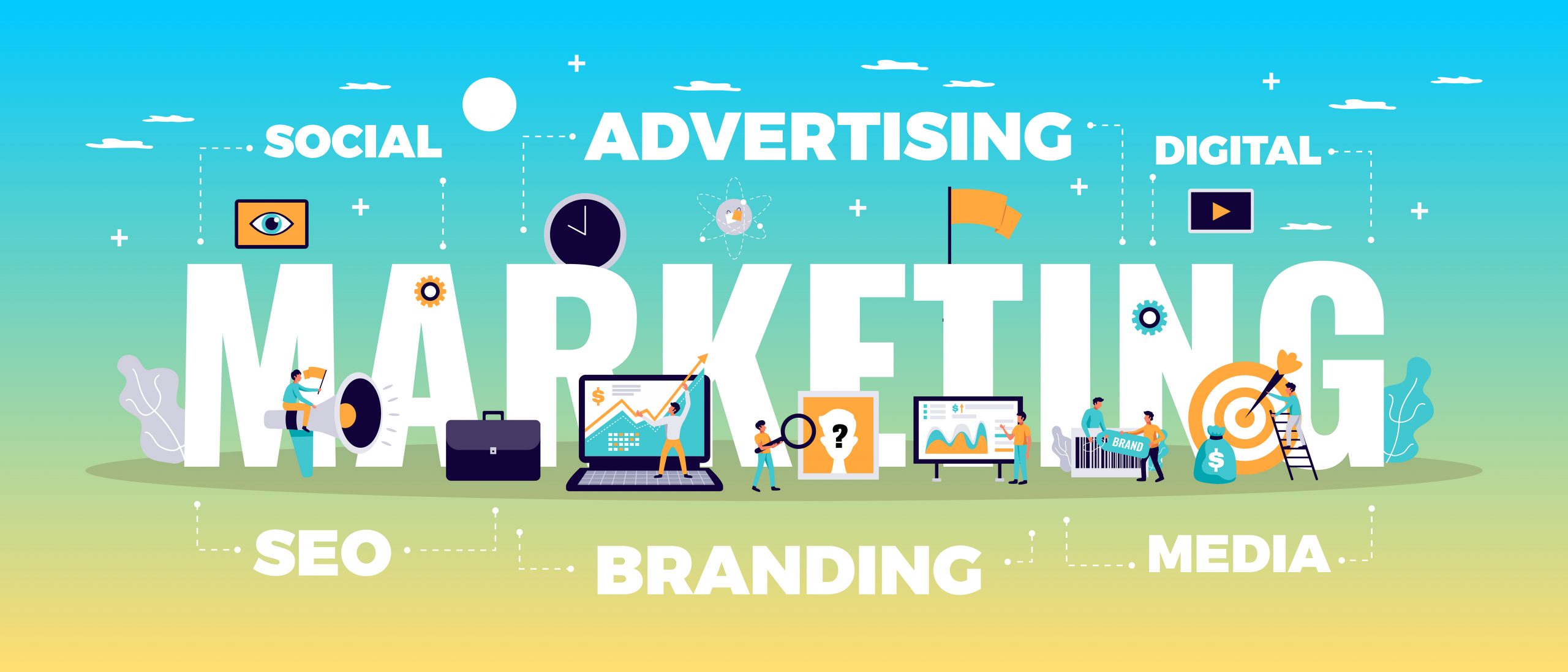

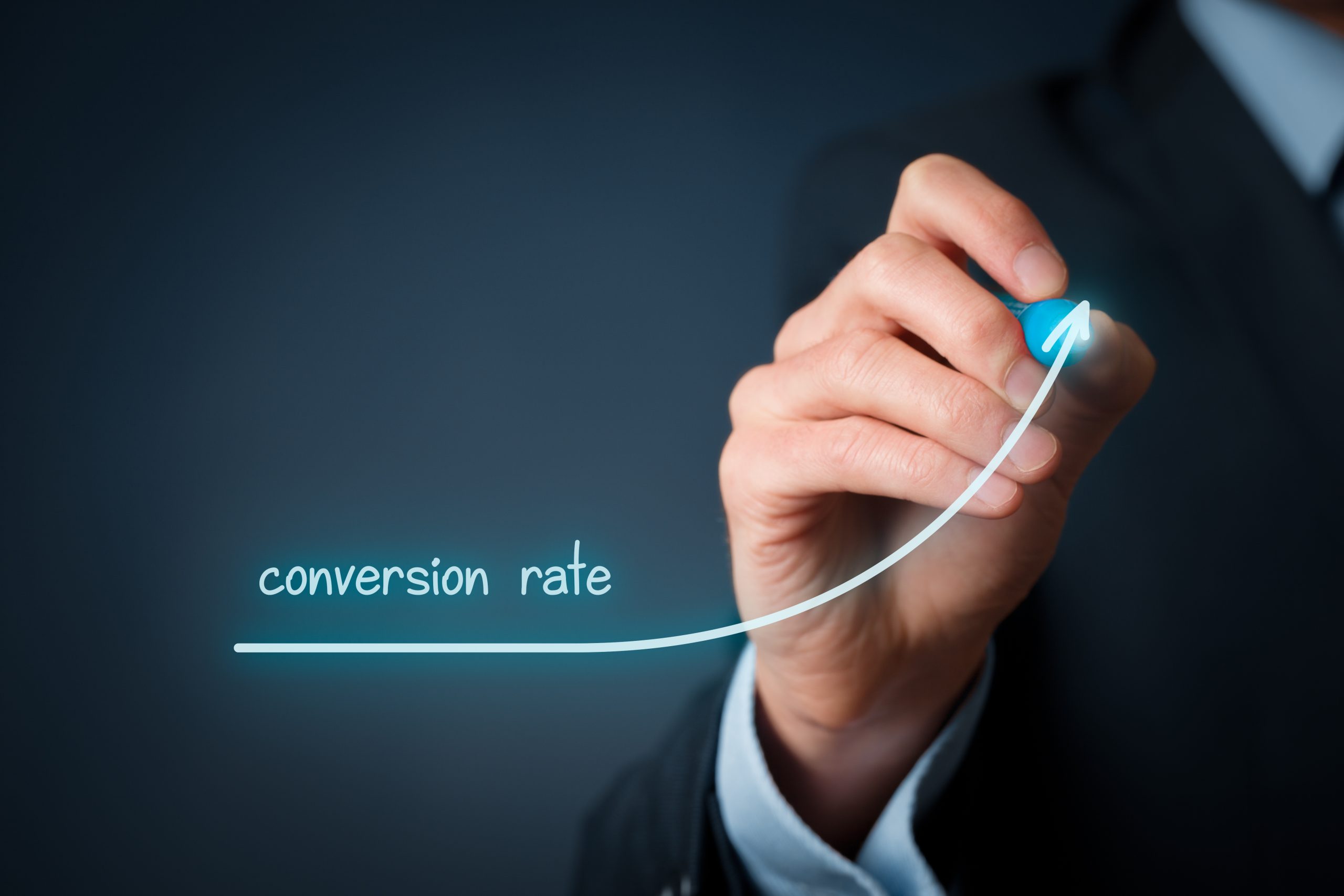










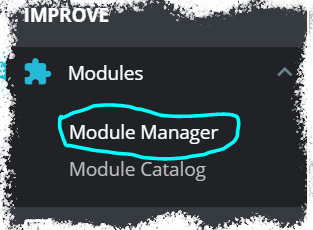






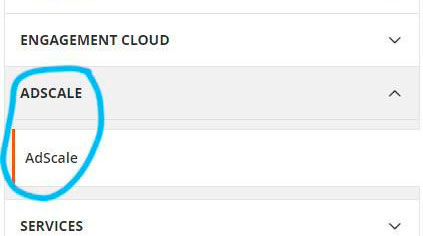


 ,
,